New resources available to reduce waste during your next home project

Many building materials have the potential to be salvaged and reused or recycled. In fact, about 85 percent of the materials in a typical demolition project could be salvaged and kept out of landfills.
Reusing or recycling building materials is environmentally preferred over recycling or trash disposal because it avoids energy use and costs associated with manufacturing new products and keeps materials out of landfills.
Managing building materials
|
Some ways to manage common building materials include:
 |
|
Salvage and reuse: Building materials that can commonly be salvaged for reuse include appliances, cabinets, doors, hot water radiators, light fixtures, windows, and wood flooring and trim. |
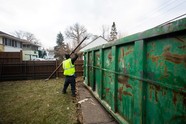 |
|
Recycle: Some buildings materials that can’t be salvaged for reuse can be recycled, including asphalt, metals, and wood. |
 |
|
Properly dispose of hazardous waste: Homeowners should bring hazardous items like fluorescent bulbs, mercury thermostats, and lawn, garden and automotive materials to a Hennepin County drop-off facility for proper disposal. |
Plan ahead
It is important to plan ahead with salvage and recycling businesses and communicate your plans with any contractors at the start of your remodeling, construction, or demolition project. Be sure to set clear goals, talk to contractors about how they manage waste, communicate throughout the project, and follow up.
Get more tips on salvaging building materials and find lists of local businesses who reuse and recycle construction and demolition waste at hennepin.us/salvage.
New pre-demolition inspection initiative
Construction and demolition projects can reveal hazardous materials, such as asbestos, items containing mercury or lead like fluorescent light bulbs and batteries, appliances, electronics, paint, and pesticides. Managing these types of hazardous wastes properly is important in protecting public health and the environment and is required by law.
Hennepin County staff recently started conducting pre-demolition inspections of residential and commercial properties to help ensure regulated materials are removed prior to demolition. To schedule an inspection for your project, call 612-348-4843 or email demo@hennepin.us. Learn more about pre-demolition inspections at hennepin.us/demolition.
Funding awarded to affordable housing properties and nonprofit organizations
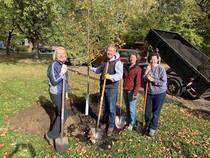
More than $100,000 in grants was awarded to three affordable housing properties and eight nonprofit organizations to promote a more diverse, resilient, and equitable tree canopy.
Grants will be used to engage communities in planting trees, remove and replace ash trees, conduct tree-related education, complete tree inventories, and hold Arbor Day celebrations. Learn more about the grants awarded.
For more information, contact Hennepin County foresters at trees@hennepin.us.
|
The Hennepin County board recently awarded $1.6 million to 10 projects for the assessment and cleanup of contaminated sites. The grants will fund asbestos and lead-based paint abatement, vapor mitigation, and contaminated soil assessment and cleanup.
The Environmental Response Fund supports projects where added environmental costs hinder site improvements or redevelopment. Grants in this round are supporting projects in Brooklyn Center, Edina, and Minneapolis that will create affordable and market-rate rental units, support development of industrial and retail space, and assist with the creation of lead-safe. Learn more about the grants awarded.
For more information, contact Mary Finch at mary.finch@hennepin.us or 612-543-1595.
Hennepin County Conservation Open House
Wednesday, March 18
6 to 8 p.m.
Hamel Community Building, 3200 Mill Street in Medina

Hennepin County provides assistance to landowners to implement a variety of conservation practices that protect water, improve soil, address erosion issues, manage livestock, protect habitat and more.
Learn about the conservation services that Hennepin County offers for owners of agricultural or large rural properties and connect with staff at our upcoming open house. There will be a short program at 6:15 p.m., then staff will be available to talk about projects or answer individual questions.
Featured topics include the county ditches survey results, Rush Creek Clean Water Fund grant, agricultural practices, and habitat restoration.
For more information, Kirsten Barta at kirsten.barta@hennepin.us or 612-543-3373.
|
Tips for maintaining a lower waste wardrobe
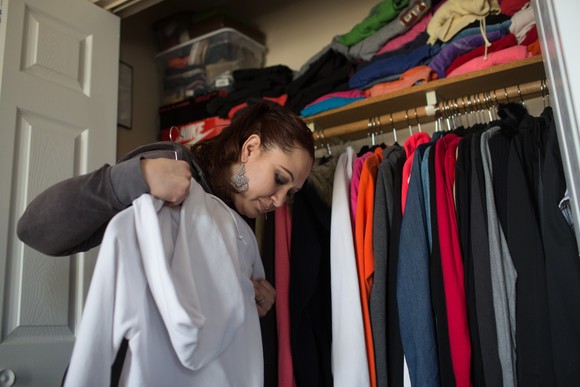
Many people striving to live a lower waste lifestyle are focused on cans, bottles, and a compost pile, but not about what’s inside their closet.
However, clothing is a big contributor to trash and an important aspect of a low-waste lifestyle. Here are some tips for loving your clothes and maintaining a lower waste wardrobe.
Care for the clothes you already have
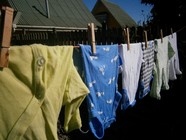
Washing and drying correctly can go a long way in extending the life of your clothing. Follow the washing and drying instructions on your clothing for washing instructions, and wash clothing in cold water as much as possible.
Reduce the amount of microplastics that are shed from synthetic fabrics like nylon and polyester by wearing clothing made from natural fibers like cotton and wool and reduce the frequency you wash your clothes.
After washing, skip the hot dryer and choose to line-dry. This can help you avoid shrinking that new sweater or pair of wool socks while saving electricity in the process.
|
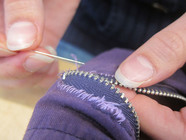
Next, learn some basic mending skills, like sewing on a new button, redoing a hem, or patching a hole. If you’re not sure how, see our video tutorials on how to patch your jeans or darn a mitten, and drop by a Hennepin County Fix-It Clinic for hands-on assistance. You can also find books on the subject at a Hennepin County library.
|
When your clothes are never worn or past their prime
If you’re like most people, you have clothing in your household that is never worn. If your clothes are in usable condition, donate them so they get another life. If they are stained, torn, or too worn for someone else to wear, consider repurposing them in other ways or using them as cleaning rags.
When it’s time to change up your wardrobe

The next time you want to buy something brand new, keep in mind the resources it takes to make and transport clothing. Reduce some of the impact by finding new-to-you pieces at thrift stores, clothing swaps, or local garage sales.
When you can’t find an item used, buy high-quality items that will last a long time rather than opting for cheap, trendy clothing. Don’t buy something simply because it’s on sale. Instead, only purchase items you truly love and will wear many times. Remember, it isn’t a deal if you never wear it!
|
|